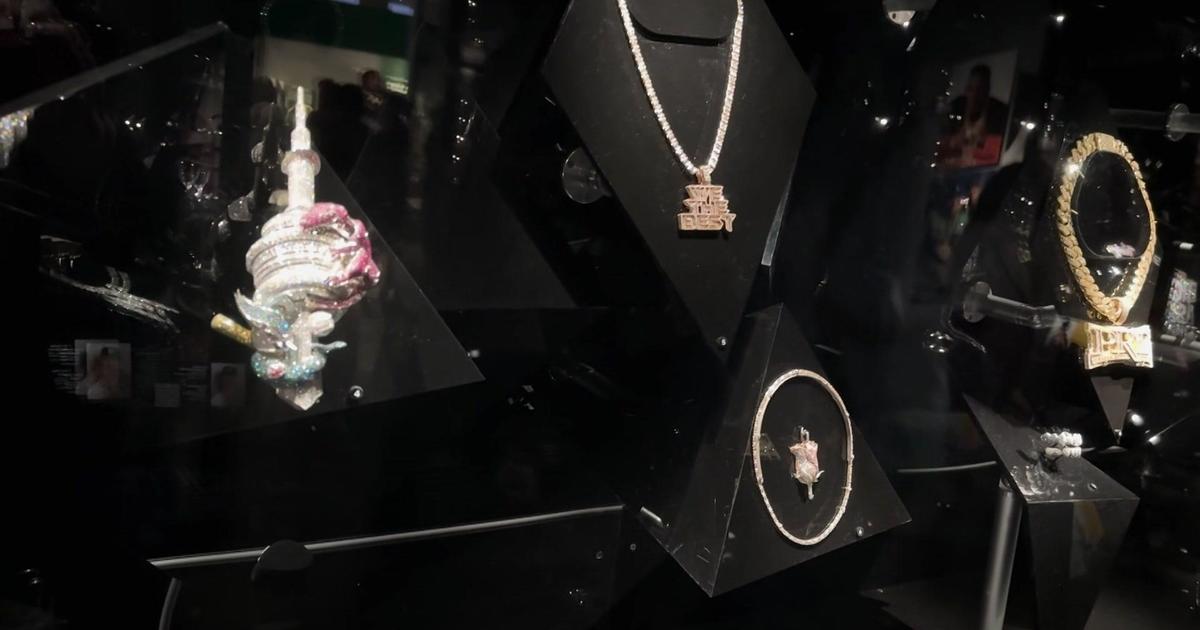More About The Alligator, White Spotted Bamboo Shark And Horseshoe Crab That Were In The Studio Today
NEW YORK (CBSNewYork) - Robert Carasiti, the director of education at the Long Island Aquarium and Exhibition Center, stopped by the CBS 2 studios to mark world ocean day. He brought an alligator, white spotted bamboo shark and a horseshoe crab. Here's some more information about those creatures, courtesy of Carasiti and the Long Island Aquarium.
American Alligators
American alligators (Alligator mississippiensis) inhabit the southeastern United States. Once a federally listed endangered species, American alligators have recovered and are common in many areas of the Southeast. The species is still federally listed as threatened because it looks like the American crocodile, which is endangered.
Alligators are long-lived animals whose life spans can exceed 60 years. Alligators are "cold-blooded," meaning that they are ectothermic animals that cannot regulate their own body temperature, but assume the temperatures of their surrounding environment. To warm themselves, alligators bask in the sun, which is when they are frequently observed on the banks of water bodies. On hot summer days they can sometimes be seen basking with their mouths open. This is a cooling mechanism essentially equivalent to a dog panting. Ecologically, alligators are important predators and create important habitat for other wildlife by digging holes that hold water during droughts.
Did you know?
• Alligators and their relatives are the last of the living reptiles that were closely related to dinosaurs, and their closest modern kin are birds.
• There is only one other alligator species, the Chinese alligator.
• Alligators and crocodiles are related. However, alligators have rounded snouts, while most crocodile species have longer, pointed snouts. Also, crocodiles occur only in tropical and subtropical areas (only south Florida in the United States), while alligators live in somewhat colder climates.
• Being ectotherms, alligators do not need to eat much – a 100-lb dog will eat more in a year than an 800-lb alligator.
• Alligators have fairly poor eyesight. They have a "nictitating membrane" to protect their eyes so that they can see underwater. Alligators hear with ears that are located behind their eyes and are very sensitive to vibrations in the water.
• At one point in recent history Alligators were severely threatened however their population has had a resurgence and now numbers are improving.
White Spotted Bamboo Shark
White spotted bamboo sharks have light and dark brown bands extending down the length of their body with numerous white spots. Full grown, these sharks can get up to three feet in length. These sharks can be found in warm, shallow waters, including coral reefs, off the coasts of Japan, Indonesia, Thailand, and India in Southeast Asia. The white spotted bamboo shark spends most of its life on the ocean floor and feeds on a variety of small fish and aquatic invertebrates. Females are oviparous, and like other sharks, it is quite easy to distinguish the males from the females. Males have claspers, which are external appendages located near their anal fins. The female lays eggs with thick egg cases, and the developing embryos can take up to three months to hatch. When they emerge from the egg case, they are approximately five inches in length.
Did you know?
• Like other bamboo sharks, the white spotted bamboo shark has short, pointed sensory organs called "barbels" attached to each nostril.
• All Sharks have extra senses that help them find food in the water.
• Bamboo sharks do not have teeth like a larger shark like the Great White. (that's why we can handle them.
• Bamboo sharks are considered near threatened and are being watched by the IUCN
Horseshoe Crabs
Horseshoe crabs are arthropods that live primarily in and around shallow ocean waters on soft sandy or muddy bottoms. They will occasionally come on shore for mating. They are commonly used as bait and in fertilizer, and in recent years there has been a decline in the number of individuals, as a consequence of coastal habitat destruction in Japan and overharvesting along the east coast of North America. Tetrodotoxin may be present in the roe of species inhabiting the waters of Thailand. Horseshoe crabs are considered living fossils.
Did you know?
• Horseshoe Crab blood is blue because of the presence of copper.
• Their blood is used by Doctors to detect bacterial endotoxins in medications.
• Horseshoe Crabs are actually more closely related to spiders than to other crustaceans.
• Horseshoe crab numbers are down and fishing for them has been halted in states like New Jersey.



